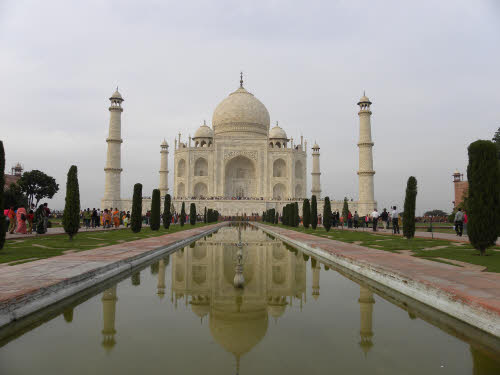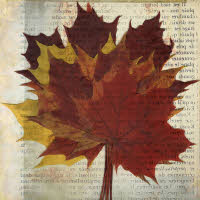by Jeevanjyoti Chakraborty
[box]What thoughts come rushing to your mind when you think of something as awe-inspiring as the Taj Mahal? Jeevanjyoti Chakraborty recounts what he felt when he first looked at the magnificent piece of art.[/box]In 1816, John Keats, whipped up by the epiphany of reading Homer’s translation by George Chapman, came up with the poem, “On First Looking into Chapman’s Homer”. I had read that poem in our official poetry book and thanked the syllabus setters for not including it in the curriculum. For, apart from the customary veneration of the Keats reputation and an appreciation of the delicate romanticist touch, I just could not relate to the spirit. As a teenager, appreciation of beauty was often marred by the cloudiness of hormonal vagaries. That was way back in 2002.
Fast forward to 2009. In twenty-five years of existence, thanks to laid-back wanderlust and petty conversational excuses that make Time and Opportunity the usual scapegoats, I had lived the life of an incomplete Indian, not having seen most of what makes India ‘Incredible’. But, the knocks of a guilty conscience had started to become uncomfortably audible. Moreover, the growing distance from teenage years had brought about an increasing mellowness and clarity like never before in appreciating beauty unblemished by tawdry frills. But, this was not helping matters of the heart either. It was in these times that a conference visit to Kanpur literally fell into my lap. I grabbed at the tenuous chance of extending this Kanpur visit to an Agra visit. And, thus, in ways unplanned and unforeseen, I was, after all, going to live up to the unsaid expectation that life demands from every child born in India – to make the pilgrimage to that eternal shrine of love and beauty, the Taj Mahal.
First up on the Agra itinerary was Fatehpur Sikri. Needless to say, the Buland Darwaza really did look buland – meaning ‘high’ or ‘great’ from Persian. The stories, narrated by the tourist guide, of Baba Salim and the conception of Salim (later to be known as Jahangir), Akbar’s son by Jodha Bai,, really made those names from middle school books look tangibly real, for the first time. Yet, the expectation of the Taj was like a splinter in our brains. And so, we made a hurried exit from the gateway to Asia (the Buland Darwaza, that is, according to the tourist guide). We strategically skipped lunch and made our way to keep our tryst with the white beauty.
The car was left behind, the tickets were taken and after our way through the security checks, we were finally within the main precincts of the Taj. Yet, I just couldn’t catch a glimpse of the white dome. By now, the wrench on my heart was palpable. Thankfully no more queues! We sauntered forward a few steps. I could almost hear the metronome, “Where is it? Where is it?” And there to my left over the red stones, out in that fantasy land, beyond the rampart-like walls and, visually, beside the grand gateway, I saw the white dome! Ahoy! And in that very moment, unawares that a pure happy smile had spread across my face, my mind went back to those lines, by Keats, read as a teenager: “On first looking…” Now, finally, I understood. 
The gateway itself is a masterpiece of architecture. We went through it and came on to the gateway’s inner pedestal. And finally, after a lifetime of waiting and procrastinating, I saw that view which, thanks to video and photography, has become the image of India – the Taj Mahal standing majestically in its perfect bilateral symmetry, beyond the still waters of the marble pools and neatly lined trees. India’s pride and a wonder to the world! The perfection itself is uncanny. You have seen that picture so many times that you could almost be forgiven for believing that it is just a painter’s rendition of some grand monarch’s idea. Yet it was there – a monument that had lived through four centuries. Standing there, I felt a sense of surrealism. I also felt like a complete Indian.
Needless to say, a seemingly interminable photographic orgy was taking place. It just seemed that every step and every minute change in viewpoint presented a novel view of the magnificent edifice.. Perhaps each person wielding the camera wanted to believe that out of those millions of photographs that has been taken for about a century, he would capture a shot from an angle and from a distance, which will be his very own – his personal view of the beauty. And in this respect, the Taj Mahal is much like the ocean. You can stand with a thousand other people on the beach – together sharing the sand, the salt, the foam and the thundering waves, yet to each man and woman, the ocean talks personally. In those moments, everyone else just fades beyond the veil of nothingness.
We took off our shoes and climbed up the main base of the Taj Mahal. The delicate beauty is so overpowering that we seldom fail to recognize the fact that architecturally, the Taj is a really robust structure. Every marble face, every angle and every ‘brick’ is rock solid. Up close, it also looked substantially imposing. The surrealism was now largely being replaced by a sinking in of the feeling that this was really happening. We waited patiently in the sinuous line meandering – much like the Yamuna nearby – across the ‘verandah’ and close to the outside marble panels. Finally, we entered the dark inner sanctum. Shahjahan and Mumtaz lay below. Their replica tombs were all that we were allowed to see. And it was just after that, that we noticed the in-lay work.
Each marble panel is styled with colourful leafy, floral designs. But not a single one of them is painted. Each and every small petal is inlaid with coloured stones. The perfection and the symmetry down to the smallest piece are simply breathtaking. I realized that we have such a careless habit of indiscriminately throwing around words like “awesome” and “great” – these should be strictly restricted to describing things like the Taj Mahal. But, then, maybe I am wrong. Is there anything truly like the Taj Mahal?
My mind went back to the stories I had heard from grandma. She had visited the Taj Mahal a long, long time ago. I remembered her telling me that she had touched some of the marble panels to see if they were indeed not three-dimensional. Grandma is no more. I made it a point to touch some panels too – wanting to believe that I could somehow tell her, across worlds – “Amma, here, I too have seen it”. I think she knows. The Taj Mahal is, in its own way, a time capsule. There are a lot of material things we touch, handle and use – things which become our personal specimens, a remembrance of our life. Yet, in the broad scheme of things, these are ephemeral and insignificant. Not so the Taj. For, if you can just visit the monument, it is a guarantee of some sort that your essence will be preserved in this dream structure of Shahjahan – across decades and centuries.
The sun was setting. And truly, the Taj had started to take on varied tinges responding to the mutating heavenly hues. Enough photographs. I sat down on one of the benches. And looked at this dream to my heart’s content. Drank in the view, the beauty. I wanted to preserve that image forever.
The Taj Mahal is about beauty, true. But, it is also about love and it would not be in the spirit not to indulge in a slight romantic escapade. To my future wife, who I haven’t met yet, I promise to make at least one more pilgrimage to this testimony of love. The cool marble and the Yamuna breeze will still be there. And, then, maybe, holding hands with her, I will be inspired to write, “On First Looking into Your Eyes”.
Pic : Pranab Kundu
[facebook]share[/facebook] [retweet]tweet[/retweet]





superb description;this can transmute one to the realms of beauty ,love,passionate belonging,comfort and peace, sitting at home.extraordinarily good travelogue.
Thanks Tamalika for your appreciation.